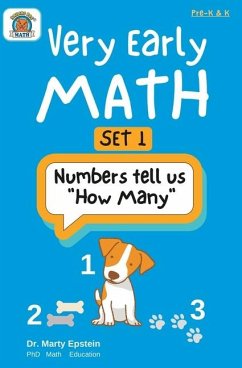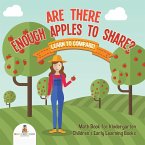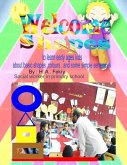This book is about "subitizing." It's a critical, but almost universally overlooked, very early math skill. The author is a Harvard MBA who became so concerned about "what's happening" in early math education as she tutored her own children that she turned her attention to how children learn math (and what can go wrong) and earned a PhD in Math Ed. What's subitizing? Subitizing involves recognizing small quantities (like groups up to 3 or 4) without counting. It's an absolutely key, but rarely taught, foundational math skill. By starting with subitizing, Very Early Math - SET 1 helps your child build a strong math foundation. Subitizing isn't only important for its own sake, it's key to developing strong counting skills, especially learning why we count and how counting works. Perhaps you're thinking, "But, my child can already count to 10 or 20, so why subitize?" Here's why. Many children who are great at rote counting have no idea why they are counting. To them counting has no mathematical meaning, it's just a rhyme they say as they point to and touch things. For many of these children, they'll count a group, "one, two, three," and think "three is the name of the last item they counted, not the size of the group (of three). And if that view persists, what will 1 + 3 = 4 mean to that child? That an item named "1" + and item named "3" = an item named "4" because "that's the rule." YIKES! That doesn't work! Such children will be able to master rote counting and memorize math facts, but they won't understand the math they represent. Their math foundation will comprise unconnected memorized information lacking in mathematical meaning. Since all arithmetic, like 1 + 3 = 4 is based on the foundational idea that numbers tell us the size of groups, why not be sure we establish that understanding of numbers right away. Subitizing does this. Rote counting does not. But starting with subitizing isn't enough. It turns out that the way we teach a child to count matters, and a lot of what we think is helpful, isn't. That's where Very Early Math - SET 2 comes in. This book helps your little one to count in a way that has been shown to give children the understanding of numbers they'll need to understand math. (Studies find that small differences in how a child is taught to count can make a very big difference in their understanding of numbers.) Like early phonics books, these very early math books give you page after page of carefully designed and sequenced math materials to help your little one build key early math skills. So, be sure to check out Very Early Math - SET 1 & 2. Using them before you give your little ones counting books and workbooks can make a big difference!
Hinweis: Dieser Artikel kann nur an eine deutsche Lieferadresse ausgeliefert werden.
Hinweis: Dieser Artikel kann nur an eine deutsche Lieferadresse ausgeliefert werden.








